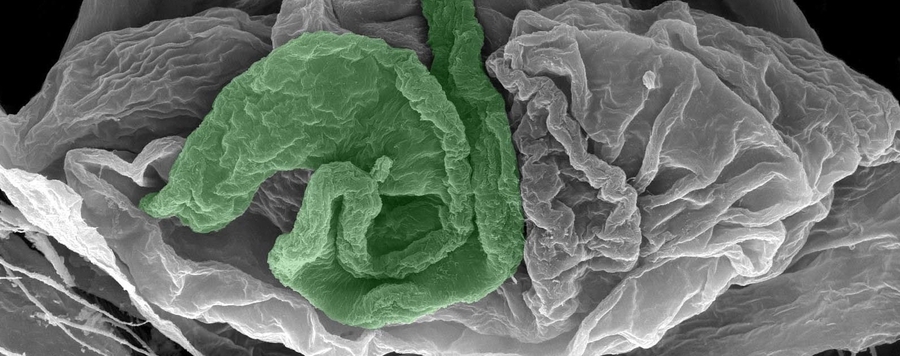
Evolution of asymmetric genitalia
Asymmetries are a pervading phenomenon in otherwise bilaterally symmetric organisms and recent studies have highlighted their potential impact on our understanding of fundamental evolutionary processes like the evolution of development and the selection for morphological novelties caused by behavioural changes. One character system that is particularly promising in this respect are animal genitalia because (1) asymmetries in genitalia have evolved many times convergently, and (2) the taxonomic literature provides a tremendous amount of comparative data on these organs. This review is an attempt to focus attention on this promising but neglected topic by summarizing what we know about insect genital asymmetries, and by contrasting this with the situation in spiders, a group where genital asymmetries are rare.
In spiders, only four independent origins of genital asymmetry are known, two in Theridiidae (Tidarren/Echinotheridion, Asygyna) and two in Pholcidae (Metagonia, Kaliana). In insects, on the other hand, genital asymmetry is a widespread and common phenomenon. In some insect orders or superorders, genital asymmetry is in the groundplan (e.g. Dictyoptera, Embiidina, Phasmatodea), in others it has evolved multiple times convergently (e.g. Coleoptera, Diptera, Heteroptera, Lepidoptera). Surprisingly, the huge but widely scattered information has not been reviewed for over 70 years. We combine data from studies on taxonomy, mating behaviour, genital mechanics, and phylogeny, to explain why genital asymmetry is so common in insects but so rare in spiders.
We identify further fundamental differences between spider and insect genital asymmetries: (1) in most spiders, the direction of asymmetry is random, in most insects it is fixed; (2) in most spiders, asymmetry evolved first (or only) in the female while in insects genital asymmetry is overwhelmingly limited to the male. We thus propose that sexual selection has played a crucial role in the evolution of insect genital asymmetry, via a route that is accessible to insects but not to spiders. The centerpiece in this insect route to asymmetry is changes in mating position. Available evidence strongly suggests that the plesiomorphic neopteran mating position is a female-above position. Changes to male-dominated positions have occurred frequently, and some of the resulting positions require abdominal twisting, flexing, and asymmetric contact between male and female genitalia. Insects with their median unpaired sperm transfer organ may adopt a one-sided asymmetric position and still transfer the whole amount of sperm. Spiders with their paired sperm transfer organs can only mate in symmetrical or alternating two-sided positions without foregoing transfer of half of their sperm.
We propose several hypotheses regarding the evolution of genital asymmetry. One explains morphological asymmetry as a mechanical compensation for evolutionary and behavioural changes of mating position. The morphological asymmetry per se is not advantageous, but rather the newly adopted mating position is. The second hypothesis predicts a split of functions between right and left sides. In contrast to the previous hypothesis, morphological asymmetry per se is advantageous. A third hypothesis evokes internal space constraints that favour asymmetric placement and morphology of internal organs and may secondarily affect the genitalia. Further hypotheses appear supported by a few exceptional cases only.





